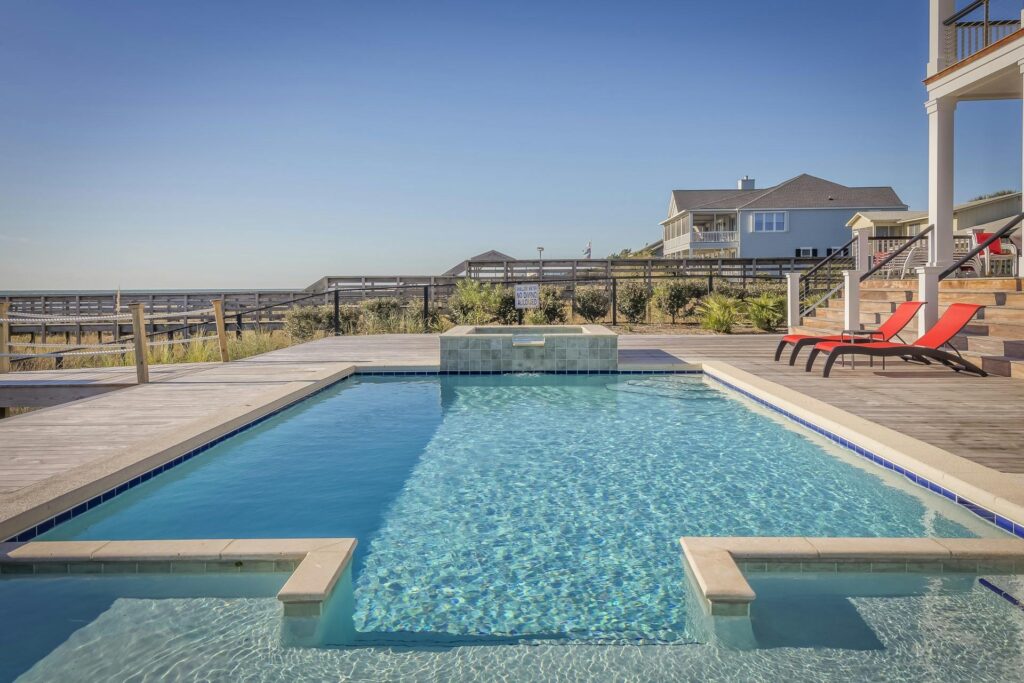A swimming pool is more than just a place to cool off—it’s a long-term investment that can elevate your home’s value, enhance your outdoor space, and create lasting memories with family and friends. But constructing a pool isn’t as simple as digging a hole and filling it with water. From planning to execution, there are critical steps and tips that every homeowner should follow to ensure a smooth, successful, and safe pool construction process. This article walks you through the most important swimming pool construction tips to guide your journey.
1. Start with a Clear Vision and Purpose
Before breaking ground, identify the main purpose of your pool:
- Is it for family fun?
- Do you want a luxurious backyard feature for entertaining guests?
- Will it be used for exercise or lap swimming?
- Are you aiming to boost property value?
Clarifying your goals helps you determine the right size, shape, depth, and features such as diving boards, spas, or waterfalls.
2. Set a Realistic Budget
Swimming pool construction can range from $30,000 to $100,000+ depending on materials, size, features, and location. Be sure to:
- Factor in extra costs like landscaping, fencing, lighting, pool covers, and permits.
- Account for ongoing maintenance including chemicals, cleaning, electricity, and repairs.
- Add a contingency buffer of around 10–15% for unexpected issues.
A well-planned budget ensures you stay financially on track and prevents delays or compromises later on.
3. Choose the Right Type of Pool
There are three main types of in-ground pools, each with pros and cons:
Concrete (Gunite or Shotcrete)
- Highly customizable in shape and depth.
- Very durable and long-lasting.
- Longer installation time and higher cost.
- Requires resurfacing every 10–15 years.
Vinyl Liner
- Lower upfront cost.
- Softer surface.
- Limited in shape and size customization.
- Liner needs replacement every 7–10 years.
Fiberglass
- Quick installation (pre-molded).
- Smooth surface and low maintenance.
- Limited in shapes and sizes.
- Higher upfront cost than vinyl.
Your lifestyle, location, and budget will determine which pool type is best suited for your project.
4. Hire a Licensed and Experienced Pool Contractor
Your contractor plays a pivotal role in the quality and longevity of your pool. Here’s how to find the right one:
- Ask for referrals from friends, neighbors, or online reviews.
- Check credentials: Ensure they are licensed, insured, and experienced with your pool type.
- Request a portfolio of past projects.
- Get a detailed contract outlining timelines, costs, materials, and warranty.
- Ask about their process and how they handle delays or issues.
A reputable contractor should provide design consultation, 3D renderings, and regular updates throughout the project.
5. Understand Local Regulations and Permits
Each city or municipality has its own building codes and safety regulations for swimming pools. These may include:
- Setback requirements from property lines or structures.
- Fencing and gate regulations.
- Drainage and plumbing codes.
- Electrical safety codes (for lighting and pumps).
- Permits and inspections throughout the construction process.
Work with your contractor to ensure all permits are secured before starting construction.
6. Prioritize Safety Features
Safety should never be an afterthought when constructing a pool. Consider incorporating:
- Pool fencing with self-closing, self-latching gates.
- Pool covers for child safety and debris control.
- Alarms for doors, windows, and pool water movement.
- Non-slip surfaces around the deck area.
- Proper lighting for nighttime use.
- Depth markers if your pool has a deep end or diving area.
If children, seniors, or pets will be using the pool, these features become even more critical.
7. Plan the Right Location and Layout
Where you place your pool is just as important as how it’s built. Here are some key factors:
- Sunlight: Choose a sunny spot to keep the water warm and inviting.
- Wind Exposure: Wind can cool the water and increase evaporation. Use landscaping or barriers.
- Access from the house: Easy visibility from the kitchen or living room enhances safety and convenience.
- Existing utilities: Avoid areas with underground pipes, gas lines, or septic systems.
- Drainage: The ground should slope away from the pool to prevent flooding.
A good contractor will help you analyze your yard and determine the optimal layout.
8. Think About Features and Upgrades
Modern pools can be as simple or elaborate as you like. Popular features include:
- Waterfalls or fountains for visual appeal and relaxing sound.
- LED pool lighting for ambiance and safety.
- Infinity edges for a luxury effect.
- Spas or hot tubs attached to the main pool.
- Tanning ledges for shallow lounging areas.
- Saltwater systems for softer water and reduced chlorine use.
- Automation systems to control lighting, heating, and cleaning with your smartphone.
While features increase cost, they can also enhance enjoyment and long-term value.
9. Consider Energy Efficiency and Sustainability
Eco-friendly pools are not only good for the environment—they can save you money in the long run. Here are a few tips:
- Install a variable-speed pump that uses less electricity.
- Use solar covers or heaters to reduce heating costs.
- Opt for LED lighting which consumes less energy.
- Choose pool finishes that reduce chemical use.
- Design efficient landscaping to reduce water runoff and erosion.
Sustainability should be discussed early in the planning phase for optimal impact.
10. Don’t Skip the Landscaping
A well-designed pool should complement your backyard environment. Landscaping adds privacy, aesthetics, and functionality. Consider:
- Plants and shrubs that are non-shedding and low-maintenance.
- Paved walkways to reduce dirt and grass entering the pool.
- Pergolas or gazebos for shade and seating.
- Outdoor kitchens or bars for entertaining guests.
- Accent lighting to highlight pathways and pool features.
Proper landscaping transforms your pool into a resort-style retreat.
11. Be Patient With the Timeline
Pool construction is not a weekend job—it typically takes 6–12 weeks or more depending on the complexity, permits, weather, and contractor schedule. Common phases include:
- Design and approvals
- Excavation
- Plumbing and rebar
- Shotcrete or pool shell installation
- Tiling and coping
- Equipment installation
- Decking and landscaping
- Interior finish and water filling
Communicate frequently with your contractor to stay updated and address concerns early.
12. Plan for Maintenance from Day One
Once your pool is built, regular maintenance is essential to keep it clean, safe, and beautiful. This includes:
- Weekly skimming, vacuuming, and water testing.
- Cleaning filters and checking pump systems.
- Balancing chlorine, pH, and alkalinity.
- Covering the pool during off-season or bad weather.
You may choose to handle this yourself or hire a pool service company.
Conclusion: A Pool Worth the Splash
Swimming pool construction is a rewarding investment when done right. From choosing the right contractor to selecting energy-efficient equipment and designing a beautiful landscape, every step matters. By planning thoroughly, budgeting wisely, and incorporating safety and sustainability, you can create a backyard oasis that delivers joy, relaxation, and long-term value.
Whether you’re dreaming of a sleek modern lap pool or a family-friendly retreat, these construction tips will help you make informed decisions and enjoy a smooth building process.



Comments